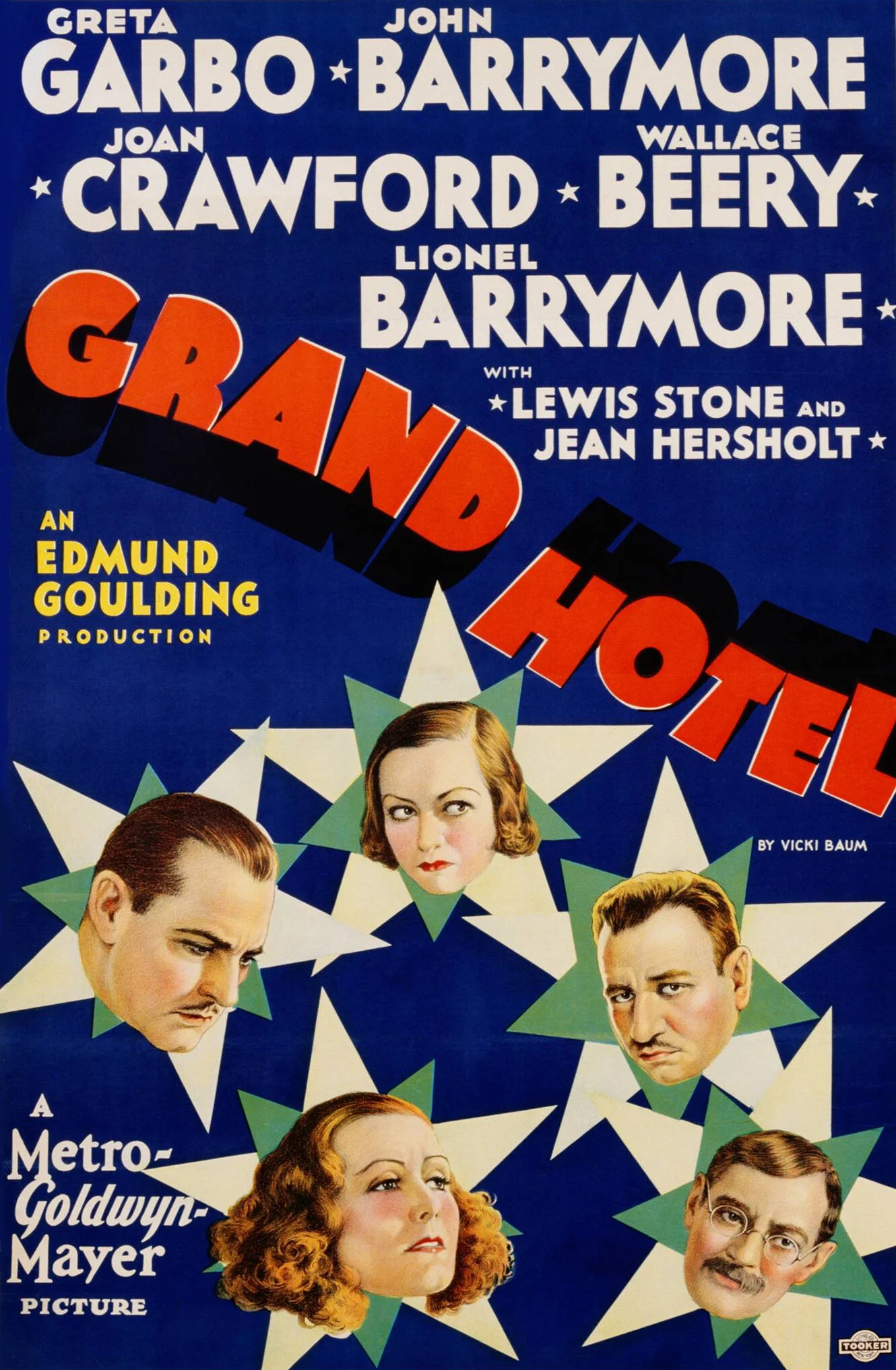Grand Hotel (1932)
Written by William A. Drake
Directed by Edmund Goulding
This marathon has truly been a rollercoaster of quality so far...Wings was a great start, and it’s dropped and climbed with each subsequent film. Luckily, once again, after the bizarre down of Cimarron, another high is reached with Grand Hotel.
I didn’t have much expectation going into this film: I knew of a Broadway musical of the same name (that my parents had seen way back when and weren’t fans of), but I wasn’t sure if it was related or not (spoiler alert: it is). Later, when I picked up my copy of the film (from your local library! SUPPORT THEM!), I saw Greta Garbo and Joan Crawford listed in the cast, and I was excited to finally see some film legends in action (and, of course, called to mind a number of Mommie Dearest quotes, especially “NO...WIRE...HANGAAAAAARS!!!”).
Greta Garbo & John Barrymore
Of the two, I enjoyed Crawford’s role much more than Garbo’s. It’s not that Crawford is much better than Garbo (although, in my opinion, she is); it’s just that Garbo’s role becomes exhausting by the end of the film. She spends the length of the film basing her value solely on others: first, the lackluster audience of the ballet (in which she is the star dancer (which we never see)), then on John Barrymore’s Baron, who is first attempting to steal from her, then also inexplicably falls in love with her. She’s never allowed to find her own worth as a person, which is draining to watch, and it slows the plot down considerably.
Lionel Barrymore & Joan Crawford
Luckily, the structure of the film relieves this drain. Instead of following a single plot, Grand Hotel juggles six different plots, each occurring concurrently and mostly staying separate until the end, when they all begin to coalesce together. It’s a structure I adore, as it encourages the audience to be active participants in the events of the film, lest they miss important connections between the storylines. To the film’s credit, there isn’t a single one that completely falters (Greta Garbo notwithstanding). We’re introduced to each by an inventive scene with each main character on a phone in the lobby, succinctly establishing themselves and their stories. It’s highly efficient, although it does feel the most like a scene lifted from the stage play upon which the film is based.
The brilliantly designed lobby set
Unlike many other films based upon a stage production, this film doesn’t seem to suffer from a bad translation to the screen: nothing seems very “stagey” (a lesson the 2005 The Producers could have learned). The camera angles are very inventive, especially when compared to the previous Best Picture winners. Notably, the camera makes a lot of use of high angles to show off its surroundings (the shots of John Barrymore (yes, the same Barrymore family that Drew hails from) as he clutches the outside of the hotel are thrilling, if not a bit vertigo-inducing). The surroundings in the film are exquisite, particularly the lobby, featuring an in-the-round reception desk and a spiral tile pattern that routinely caught my eye. The hotel rooms themselves do begin to all look the same, but this is partly due to the black and white film (and that, in all reality, they probably WERE all the same room).
I enjoyed this film much more than I expected. It was touching, humorous, and engaging, and the use of concurrent plots is fantastic. It’s a nice change from the shambles of Cimarron, and before the dive back into the depths of travesty with Cavalcade.
FINAL GRADE: B+





